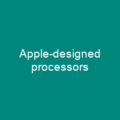The Magic Mouse: A Journey Through Time
Imagine a world where your computer mouse could do more than just point and click—where it could understand your every gesture, like a magic wand in your hand. That’s exactly what the Magic Mouse from Apple Inc., manufactured by Foxconn, promised when it first hit the market back in 2009.
The First Generation: A Leap into the Future
Wasn’t the Magic Mouse revolutionary? It was! The first-generation Magic Mouse introduced multi-touch functionality to a computer mouse, connecting wirelessly via Bluetooth. Imagine being able to scroll and zoom with just your fingers—no need for a trackpad or complicated gestures. This innovation transformed how we interacted with our computers.
The Second Generation: A Leap Forward
But the journey didn’t stop there. In 2015, Apple released the second-generation Magic Mouse, which removed AA batteries in favor of a rechargeable lithium-ion battery and included a Lightning port for charging and pairing. This was a significant step forward, making the mouse more energy-efficient and user-friendly.
The Third Generation: A Leap into USB-C
Fast-forward to 2024, and Apple introduced the third-generation Magic Mouse. This version replaced the Lightning port with a USB-C port, bringing it in line with modern charging standards. However, some users were left wondering why the USB-C port was placed on the bottom of the mouse, making it unusable while charging.
Design Criticisms and User Feedback
The Magic Mouse has faced its fair share of criticism over the years. Some users found that certain gestures couldn’t be triggered easily, and the low-profile design caused discomfort for some. The third-generation mouse’s USB-C port placement was particularly criticized, as it made charging inconvenient while using the mouse.
Missing Features: A Case in Point
One of the most notable omissions from the Magic Mouse is Force Touch technology, which was present in the second-generation Magic Trackpad. This feature allowed for more precise and nuanced interactions, something that the Magic Mouse lacked. When the third-generation mouse was refreshed, it retained its USB-C port placement, sparking further criticism due to the lack of updates over the past 9 years.
Conclusion: A Timeless Tool with Room for Improvement
The Magic Mouse has been a staple in many desktop setups since its introduction. It’s like having a magic wand that can do more than just point and click—it’s a tool that enhances your computing experience. However, as technology evolves, so should our tools. The Magic Mouse has shown us the potential of multi-touch functionality but also highlighted areas where improvements are needed.

You want to know more about Magic Mouse?
This page is based on the article Magic Mouse published in Wikipedia (retrieved on December 31, 2024) and was automatically summarized using artificial intelligence.







